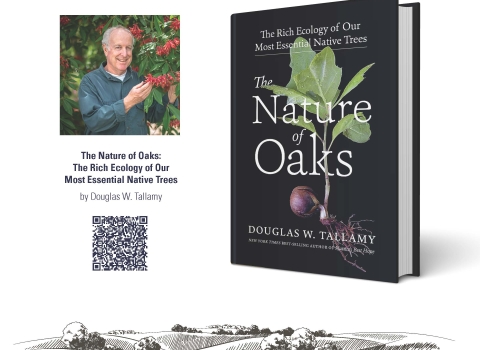Dawn breaks at the west-central mountain region (Cordillera Central) of the tropical island of Puerto Rico. The night dew clings to every surface on the forest floor and makes fern leaves glimmer. At the Maricao Commonwealth Forest, about 1,300 feet above sea level, tropical birds call to one another announcing a new day. Today marks a new beginning for a returning resident of the forest, the Puerto Rican parrot.
The Reina Mora (Puerto Rican spindalis) shakes its painted head as the Bienteveo (Puerto Rican vireo) stoops. A foraging San Pedrito (Puerto Rican tody) catches a cricket in mid-air and two wildlife biologists dressed in fatigues exit from behind a blind. They walk at snail pace toward a massive 16- foot tall, galvanized steel and wire mesh cage. Thirty parrots are about to be set free. About two dozen people are watching from behind the blind. Thousands of people are watching from their homes because a live feed is airing this event on public television.
Why so much interest? The Puerto Rican parrot is an endemic species of Puerto Rico, and the only native parrot in the United States. Conservation professionals have been working toward the parrot’s reintroduction to the the Maricao Forest for more than 40 years. This reintroduction begins a new chapter in the history of the Puerto Rican parrot recovery program. During pre-Columbian times the parrot was abundant, but through the years, deforestation, predation, diseases and poaching caused the population to crash. In the 1970’s, chicks and eggs were captured from the wild, and a collaborative effort between state and federal agencies began. Today, the population has more than 500 birds that are distributed among state and federal facilities and, until today, only two wild locations, the El Yunque National Forest and the Rio Abajo Commonwealth Forest.
Finally, the gates gently swing open, and the Puerto Rican parrots are set free. For a few seconds, everyone watching is enthralled as the parrots’ instincts take over and the birds spread their wings and fly away. Other wild birds here have been expecting this moment too, as they have witnessed this flock’s preparation; parrots perched and flying for over a year inside the towering cage. A confined existence wild animals most likely find intolerable was a necessary transition for the parrots to acclimate and develop fidelity to the release site. These released parrots were born and cared for at other locations. The parrots were transferred from the José L. Vivaldi Aviary located at Rio Abajo Commonwealth Forest and the Iguaca Aviary located at El Yunque National Forest (see figure 1); two facilities exclusively dedicated to captive breeding and veterinary care for Puerto Rican parrots.
Monitoring the parrots’ dispersal, survival rate, and habitat use will be a priority for the coming weeks. The parrots are fitted with radio-collared transmitters. Four people embedded throughout the forest will track the parrot’s signal for the next year. In anticipation, an old trail system was rehabilitated to allow biologists access to secluded areas.
Monitoring recruitment of breeding birds and other population attributes will be the next priority in 2017. Artificial nests were installed throughout the forest to provide viable nesting sites for the first group of parrots that may start reproducing here. Within the next few years, state and federal biologists will seek to control predators and competitors, monitor the size of the wild population, maximize parrot reproduction in the wild, continue release of captive-reared parrots, monitor all releases of Puerto Rican parrots to identify mortality factors and to reduce their impacts and assess habitat use, and develop and implement plans to expand the release program. The big picture, long term goal moving forward is to establish at least three interacting populations of parrots in the wild and document sustained population growth for 10 years. Initiating the third location is a key milestone towards recovery. It minimizes the risks of the parrots’ extinction because it is less likely that hurricanes and disease outbreaks, and other threats like predation will affect equally and simultaneously three spatially segregated populations.
The future looks bright for the Puerto Rican parrot. The Maricao Commonwealth Forest, commonly known as only the Monte del Estado -which refers to the mountain of that name located in the forest- is surrounded by privately-owned forested lands of abandoned coffee plantations which have reverted back to secondary forest. Many of the landowners have conservation agreements with the Service’s Partners for Fish and Wildlife Program and the Puerto Rico Department of Natural and Environmental Resource’s Auxiliary Forests. These private lands are expected to provide landscape connectivity between the Maricao Forest and other major forested areas, such as the Susúa Commonwealth Forest, the Guilarte Commonwealth Forest, forested regions of the Cordillera Central, and potentially even the northern Karst region where another population of Puerto Rican parrots is currently thriving.
How You Can Help
We encourage visitors and residents within the municipalities adjacent to the forest, to keep an eye out for the Puerto Rican parrot. Pay attention to an antenna and a cylinder on the neck. Keep your distance to avoid startling the birds, and call 787-888-1810 extension 5535 to report sightings.
Be prepared to provide the following information:
- Town and location where the individual was observed
- How many individuals were observed
- General condition and behavior.

